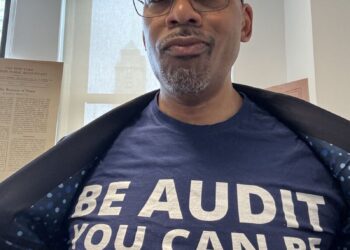By Doni Glover, Publisher
(BALTIMORE – November 4, 2023) – In the heart of West Baltimore lies the Sandtown-Winchester community, a place with a rich history of faith-based and community-engaged efforts aimed at bringing about positive change and development. The community, often overshadowed by its more prominent neighbor, Penn-North, has seen its fair share of challenges and triumphs over the years. However, recent developments in the Sandtown-Winchester area raise questions about transparency, community involvement, and accountability in the name of progress.
The story of Sandtown-Winchester begins in the 1990s when a surge of investments from nonprofit organizations and foundations ushered in a new era of hope and possibility. The Sandtown-Winchester Transformation Project, aptly named Community Building in Partnership, brought together various organizations and community partners, all working diligently to address the community’s pressing needs. The Nehemiah Project, a housing development initiative, remains a testament to the positive impact that community-driven efforts can have on revitalizing neighborhoods.
Fast forward to 2015, and Sandtown-Winchester found itself thrust into the international spotlight following the tragic events surrounding Freddie Gray. The community, which had witnessed its fair share of neglect over the years, suddenly became the epicenter of media attention. Politicians who had long been absent from the community began to make appearances, and promises of support were made. The eyes of the world were on Sandtown.
It is essential to understand that Sandtown is technically distinct from Winchester; the west side of Fulton Avenue is Sandtown and the east side – where Rev. Derrick Dewitt’s church, Mt. Calvary is located – is Winchester. Although the two have been combined for City Hall purposes of organization, Sandtown has a unique vibe and culture of its own, and it is the larger part of Sandtown-Winchester by far.
In the aftermath of the Freddie Gray unrest, a new group of clergy resurrected the acronym CUTS, which stands for Clergy United for the Transformation of Sandtown-Winchester Community Development Corporation (http://cutssandtown.org/). Originally, CUTS stood for Clergy United To Save Sandtown. However, concerns have arisen about the organization’s activities and its commitment to the Sandtown community. Dewitt is the chairman of CUTS and often boasts about how many boards he is on in Sandtown.
One notable development involves the Sandtown Center, which was supposed to receive part of a substantial investment of $1.5 million from U.S. Senators Ben Cardin and Chris Van Hollen, aimed at historically underserved communities. Residents now question the progress of the Sandtown Center, as the building it was meant to occupy at 1409 Presstman Street remains bricked up, and no permits have been pulled since 2021. This lack of visible progress raises concerns about transparency and accountability.
Furthermore, the tax-exempt status of “Clergy United for the Transformation of Sandtown-Winchester CDC” has been revoked by the IRS, adding another layer of doubt about the organization’s intentions and its ability to serve the community effectively.
Long-time residents and community activists have voiced their skepticism about CUTS and its operations. Some community leaders question the authenticity of individuals who do not reside in Sandtown speaking on behalf of its residents. The lack of community-driven initiatives and input from those who call Sandtown home is a cause for concern.
Community-driven development efforts are crucial to ensure that the unique needs, strengths, and aspirations of the Sandtown community are addressed effectively. The voices of Sandtown residents, including college-educated homeowners, business owners, and active members of the community, should be heard and valued in the decision-making process.
What’s most egregious is how CUTS, under Dewitt’s guise, has usurped Sandtown’s brand when technically his church is not even in Sandtown. Further, the only Sandtown church represented on the CUTS board of directors is St. Peter Claver Catholic Church. This is so disingenuous. It has the appearance of clergy working to capitalize off of the poverty in Sandtown.
In conclusion, the Sandtown-Winchester community has a storied history of resilience and community-driven initiatives. The recent developments and concerns regarding the Sandtown Center highlight the importance of transparency, accountability, and community involvement in development efforts. It is essential that those who live in Sandtown have a say in shaping their own future and that the community’s rich history and culture are acknowledged and celebrated.
















